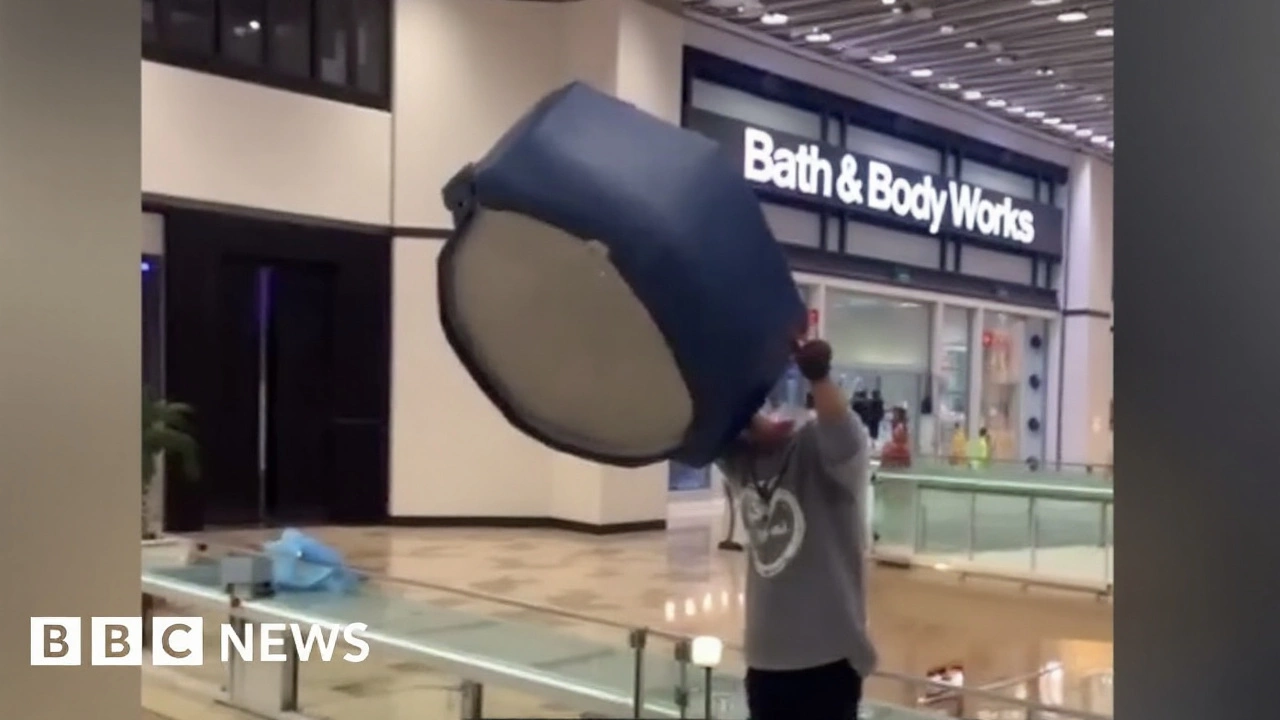A 15kg chair, a 50-foot drop, and a near-miss at Westfield
A stunt filmed for social media nearly became a disaster at Westfield Stratford. On March 1, a 15-year-old boy lifted a 15-kilogram blue chair over a glass balustrade on the top level of the shopping centre and sent it plunging an estimated 50 feet. The chair, worth £500, ricocheted down multiple floors and landed dangerously close to shoppers below. The video, recorded by another 15-year-old, captured the throw and the pair sprinting away, swearing as they ran.
The clip spread fast online, and so did the anger. Commenters pointed out the obvious: if that chair had hit someone—say a parent with a pram—this would be a very different story. Stratford’s MP, Uma Kamaran, said she was appalled and raised the incident with City Hall and police. Mallgoers who saw the footage echoed the same fear: it wasn’t a prank, it was a near tragedy.
At Stratford Magistrates’ Court, the teenager who threw the chair admitted criminal damage and recklessly causing a public nuisance. The boy who filmed it denied the charges. Prosecutor Elizabeth Ajayi told the court the two had attempted similar “stunts” before, including throwing objects off bridges at trains—behaviour that has prompted repeated warnings from transport police because of the obvious risk to drivers, passengers, and rail infrastructure.
To grasp how close this came to catastrophe, think about the physics. A 15kg chair falling from around 15 metres carries roughly two thousand joules of energy by the time it hits the ground. That’s the kind of force that can crush a skull, break a spine, or shatter a shoulder. Glass balustrades are designed to stop accidental falls, not to contain heavy objects being hurled over them.

The charges, the risks, and the ripple effects of viral stunts
The charges tell their own story. Criminal damage covers the broken or endangered property—the £500 chair and any fittings it could have smashed. Public nuisance is about risk and disruption to the public: the panic it causes, the danger it creates, and the resources it pulls away from elsewhere. It’s a charge used when behaviour is reckless, endangering people who just happened to be in the wrong place at the wrong time.
One charge did not stick. A count of criminal damage that recklessly endangered life was dropped in court. Even without it, the case centres on the same core fact: there was a serious risk of someone getting badly hurt or killed. That’s why this isn’t being treated as a harmless prank gone wrong.
What will happen next? In youth cases like this, courts look at culpability, harm, and any pattern of behaviour. Admissions of guilt, cooperation with investigators, and engagement with youth services often matter. So does the context: filming for a crowd online tends to be viewed as aggravating because it encourages copycats and turns real-world harm into content.
Retail staff and security teams face a tricky reality. Shopping centres are built to be open, bright, and easy to navigate. Multiple levels, atriums, and balcony seating create inviting spaces—but they also create vertical drop zones over busy walkways. That means anything tossed from above—chairs, bottles, scooters—becomes a projectile. After incidents like this, centres typically review camera coverage, staffing on upper levels, and how heavy fixtures are placed near railings. Some shift seating away from edges or add signage reminding visitors that throwing objects is a criminal act, not a dare.
The social media piece matters here too. The video’s appeal—shock, speed, a sense of rule-breaking—powerfully rewards risk. That attention can make teenagers mistake a moment of online fame for a harmless gag. But public nuisance isn’t about intention, it’s about the risk you create. Once the clip is out there, the fallout begins: police time, court time, and lasting anxiety for people who use the space every day.
There’s also the cost beyond the chair’s price tag. When something like this happens in a high-footfall venue, staff may cordon off areas, pause escalators, or redirect crowds to check for injuries and damage. That disruption matters to businesses and to families who just wanted a normal Saturday shop. And it sticks in the memory. People who see an object slam into the floor near them don’t forget it.
Prosecutors referenced earlier incidents involving trains, which raises a separate set of dangers. Rail operators warn that objects thrown from height can smash windscreens, daze drivers, and lead to emergency stops. Even if no one is hit, debris on tracks can trigger delays, inspections, and repairs. That cascades into missed connections, stranded passengers, and unexpected bills. The law treats those risks seriously because the chain reaction is so predictable.
Politically, the reaction was swift because the risk is easy to picture. Uma Kamaran said she was appalled; residents echoed that word again and again. It’s not a moral panic to worry about a chair falling on a child. It’s common sense. That clarity is why public nuisance cases tend to cut through the noise—they’re about protecting ordinary people doing ordinary things.
So where does that leave the two teenagers? One has admitted what he did; the other contests the charges. The court will weigh the evidence, including the video and the alleged history of similar stunts. Whatever the sentence, the message is already out there: filming a dangerous act doesn’t make it clever, and it won’t shield anyone from accountability. If anything, the clip becomes Exhibit A.
The wider question is how to stop repeats. Education programs led by youth workers and police can land better than lectures, especially when they include real stories from victims and first responders. Shopping centres can redesign high-risk spots and make it crystal clear—through signage and visible patrols—that throwing anything from height is a criminal offence. And parents, schools, and platforms can keep talking about the gap between online clout and real-world harm.
In this case, no one was hit. That was luck. The court heard enough to know it could have ended differently. The next time a heavy object sails off a balcony, luck may not be part of the story.
